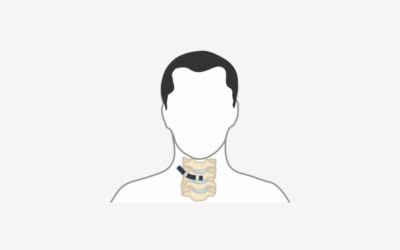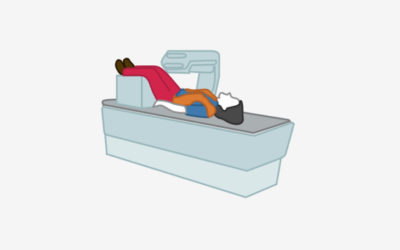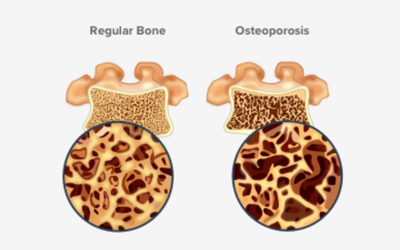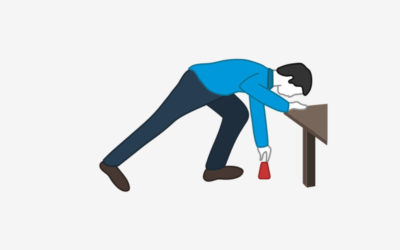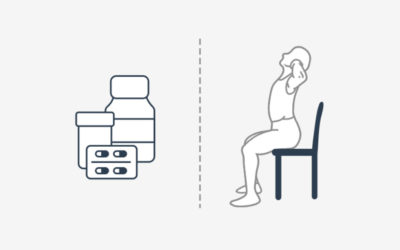Leading Experts in Minimally Invasive Spine Surgery in California
Get An AppointmentMost people who are considering surgery would prefer a minimally invasive procedure but very few actually understand what this means. Minimally invasive spine surgery does not refer to a specific procedure. Rather, it is more properly described as a philosophy. In order to understand this approach, it’s important to understand the traditional method of spine surgery and compare it with this newer more effective method.
Older Traditional Spine Surgery…
Increased Recovery Time
Large Incisions (5 in+)
Higher Infection Risk
Longer Hospital Stay
When approaching surgery, the traditional technique was to make a large incision with wide exposure to allow for complete visualization of the anatomy. This way surgeons could be comfortable that they were operating in the right area and doing the right procedure. Unfortunately, this required large incisions extensive dissection and subsequently damage that issues. This increases recovery time increases the risk of infection increases surgical time ultimately this leads to increased length of stay in the hospital and increased risks of peri-operative complications.
Newer Minimally Invasive Surgery Today…
Quicker at-Home Recovery
Smaller Incision
Faster Surgery
Minimal Damage
As we have gained a better understanding of surgical anatomy and with greater availability of resources such as image guidance and improve surgical instruments such as arthroscopes and specialized retractors we have been able to greatly reduce the size of surgical incisions. ultimately the goal is to accomplish the same procedure with minimizing collateral damage. In this way a lumbar Fusion that traditionally would have been done with the 5 or 6 inch scission in a surgery that lasted 3 to 4 hours and may have had blood loss that was significant enough to require a transfusion, can now be done through 2 small incisions less than an inch in length with tissue spreading techniques that minimize muscle damage.
Minimally Invasive surgery can accomplish the same decompression and stabilization of the spine. In a skilled physician’s hands, the surgery will take less time than the old method of open procedure. Additional equipment and significant training and experience are required which is why true minimally invasive spine surgery continues to only be done by a few surgeons.
Recent Blogs on Minimally Invasive Treatments
Diagnosis of Spinal Stenosis
For most patients, the evaluation of spinal stenosis begins with a comprehensive physical and neurological examination followed by confirmatory imaging tests (An X-ray or MRI scan). The tests provide valuable information about the cause of your spinal stenosis and...
Causes and Symptoms of Spondylolisthesis
The exact cause of spondylolisthesis is unknown, although certain risk factors have been identified. Fractures When you fracture your spine, vertebrae are more likely to become unstable and slip onto the vertebrae below. Overuse The injury most often occurs in...
What You Can Do to Prepare Before Your Surgery
If surgery is the recommended route to treat your condition and back pain, be sure to follow your doctor’s guidelines pre and post-op. Before your spine surgery, your doctor may ask you to do a number of things to help make the procedure go smoothly and help your body...
Minimally Invasive Cervical Disc Replacement
Spine surgery is traditionally an open surgery. This means the area being operated on is opened with a long incision to allow the surgeon to view and access the surgical site. In recent years, technological advances have allowed more back and neck conditions to be...
Diagnosis & Screening of Osteoporosis of the Spine
Osteoporosis is different from most other diseases or illnesses because there is not a single cause. Different testing methods may help determine if you have or are at risk for osteoporosis. If osteoporosis is suspected, a diagnosis must be made before an appropriate...
Symptoms of Osteoporosis of the Spine
Osteoporosis is often referred to as a silent disease. This means it can develop without any signs. In the case of osteoporosis, bone loss occurs without symptoms. That said, subtle signs of osteoporosis may be joint and bone pain or a loss of height. Most patients...
Causes and Symptoms of Herniated Disc
As we age, the spinal discs gradually lose fluid. This process starts at about age 30 and progresses over time. As the discs dry out, microscopic cracks or tears can form on the outer surface, causing it to become brittle, weak and more susceptible to injury. The most...
Body Mechanics for Neck and Back Pain
Your spine is made up of four main parts. From top to bottom the parts are: the cervical (neck), thoracic (mid-body), lumbar (lower back) and sacral (tailbone) spine. The cervical and lumbar parts curve inward while the thoracic and sacral curve outward. From the...
Non-Surgical Treatment for Chronic Back Pain
Prior to starting any type of treatment, it's important to see a spine specialist to develop an appropriate treatment program for your specific condition and medical history. Based on information you give your doctor spine surgery is not always the answer. The main...
Guide to Diagnostic Tests for Spine Surgery
If your spine surgeon suspects that a specific condition may be causing your pain, they will order diagnostic tests. These could include imaging, scans or blood tests. At Huffman Clinic’s spine surgery center, we perform a complete set of tests to ensure that our...
Follow Us
Request An Appointment
Address: 3273 Claremont Way, Ste. 201, Napa, CA 94558
Phone: 707-603-1042




